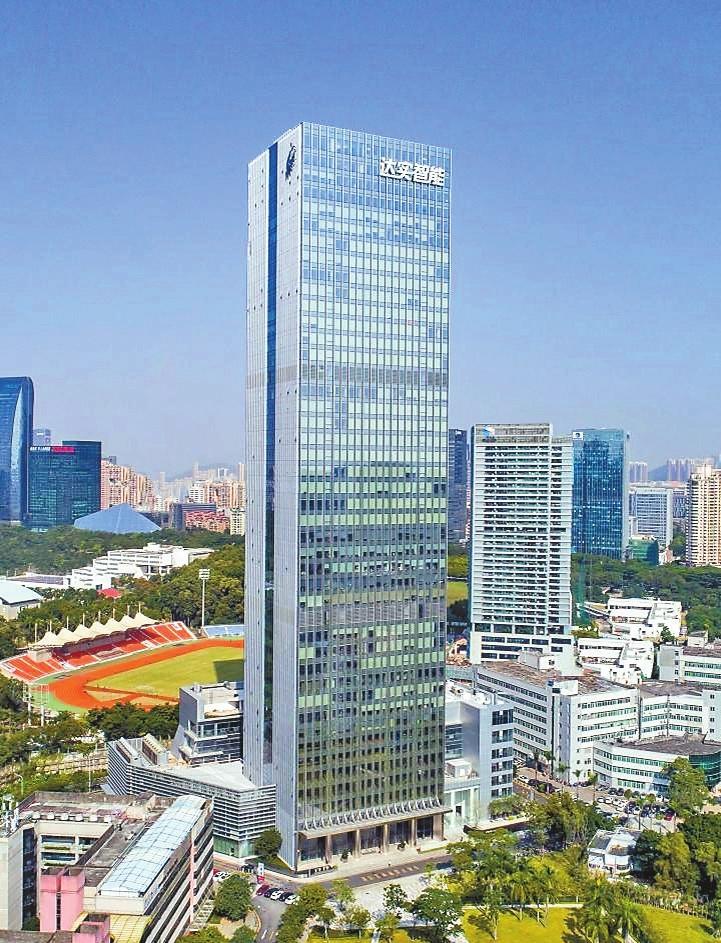

Wang Jingli wangjingli0715@163.com ZHANG XUEFAN, head of Shenzhen’s ecology and environment watchdog, shared Shenzhen’s strategies and actions in adapting to climate change with the world at the ongoing 28th Conference of the Parties to the U.N. Framework Convention on Climate Change (COP28) in Dubai on Wednesday local time. Shenzhen, a coastal city in southern China, is vulnerable to climate hazards and faces significant pressure on resources and the threat of various natural disasters, he said. To address these challenges, Shenzhen has proactively enhanced its capacity to adapt to climate change, continuously taking measures to make urban operations safer and development more sustainable. It has integrated climate adaptation concepts into laws, regulations and urban planning, enacting innovative local legislation such as ecological environment protection regulations, and natural disaster prevention and control regulations. Shenzhen is in the process of drafting an action plan for climate adaptation, intending to chart a new strategic blueprint for future action, he said. Shenzhen actively pursues nature-based solutions to make the city safer and more resilient. As early as 2015, Shenzhen delineated basic ecological control lines, encompassing nearly 50% of the city’s land area as off-limits for development, enabling natural ecosystems to preserve diversity, stability, and sustainability through natural restoration. On the other hand, Shenzhen continues to advance the construction of green infrastructure, with sponge city construction covering 46% of the developed area, over 80% of communities being built into green and livable spaces, and the coverage of parks and green spaces within a 500-meter radius of residential areas reaching 90%. In infrastructure construction, Shenzhen places particular emphasis on developing resilience against natural disasters. In October, Shenzhen’s experience in large-scale smart meteorological services was included as a typical case in the 2023 U.N. Joint Scietific Report. So far, Shenzhen has set up 1,183 emergency shelters, achieving 100% coverage of communities with emergency shelter facilities. The city will build more spaces for emergency evacuation and rescue in an effort to create a world-class city with safe development, he said. White paper on climate change Shenzhen has built 1,263 parks and its penetration rate of new energy vehicles (NEVs) has exceeded 60%, according to Shenzhen’s first white paper released at COP28 on Tuesday. The white paper sorts out Shenzhen’s policies and actions related to climate change. Shenzhen has built six high-precision automatic monitoring stations for greenhouse gases and two monitoring stations for mangrove marine carbon sequestration and carbon fluxes, as per the white paper. Additionally, Shenzhen has actively explored a new path for near-zero carbon development, and launched 56 pilot projects for near-zero carbon emission zones, which are expected to reduce carbon emissions by about 43% upon completion of the projects. Firms’ innovation The city’s green development is also inseparable from the contribution of local firms. Companies such as BYD, SF Express, Das Intellitech, and Shenzhen Metro Group are highlighted in a list of the city’s top 10 green and low-carbon cases of the year unveiled at the Shenzhen Session. Das Intellitech, a leading enterprise in the field of energy conservation in Shenzhen, has been engaged in the field of smart building and building energy conservation for nearly 30 years. The company provides users with smart space and low-carbon energy-saving services based on its self-developed intelligent Internet of Things management and control platform (AIoT). Its building energy-saving technologies and solutions have been widely used in buildings and parks, hospitals, urban rail transits, and data centers. According to the company, it had saved 1.18 billion kWh of electricity for users and reduced about 1.176 million tons of carbon dioxide emissions by the end of 2022. At the Das Intellitech headquarters building in Nanshan District, its AIoT platform has linked 20,000 devices inside the building and served nearly 5,000 mobile phone applications. The building also realizes on-demand cooling based on artificial intelligence algorithms. Shenzhen Metro Group vigorously promoted the application of photovoltaic technology. “So far, we have completed six photovoltaic projects with a total annual power generation of 5.8 million kilowatt hours, with an annual emission reduction of 5,500 tons of carbon dioxide,” Lei Jiangsong, deputy general manager of Shenzhen Metro Group, said. Liang Rui, vice president of Sunwoda, a local demonstrative enterprise for green and low-carbon applications, was invited to attend a panel discussion at the Shenzhen Session. According to Liang, the company has implemented 30 measures in order to achieve its carbon goals, with initial results achieved. In 2022, the company’s energy intensity was reduced by 8.2%, and completed 142 energy-saving management and technological transformation projects, equivalent to reducing emissions by 17,488 tons. The annual power generation of its centralized photovoltaic and distributed photovoltaic reached 61 million kWh, which is equivalent to reducing emissions by 53,000 tons. | 
